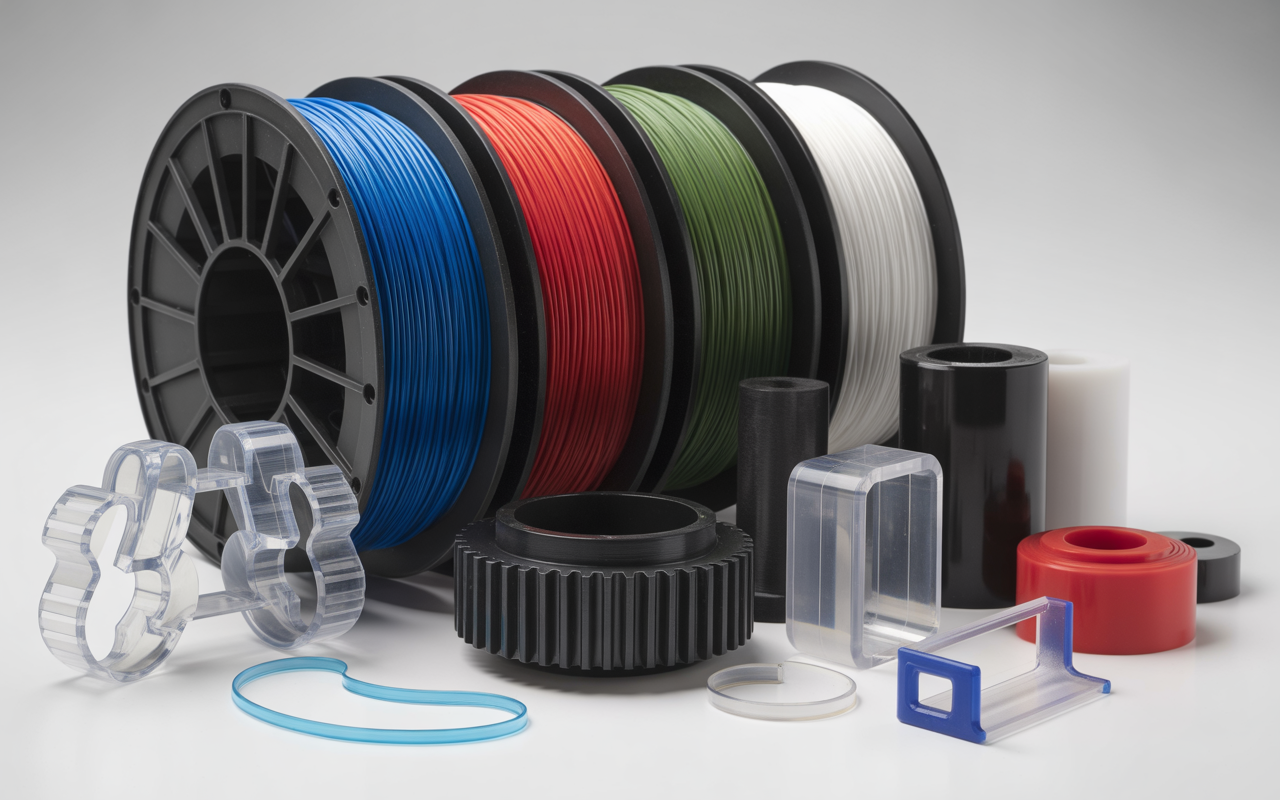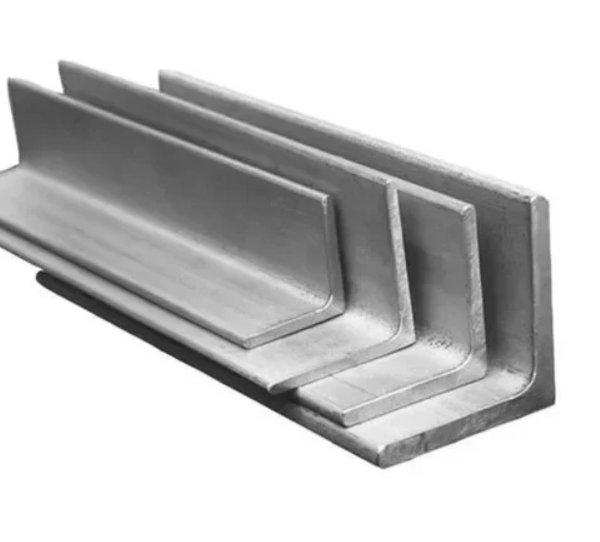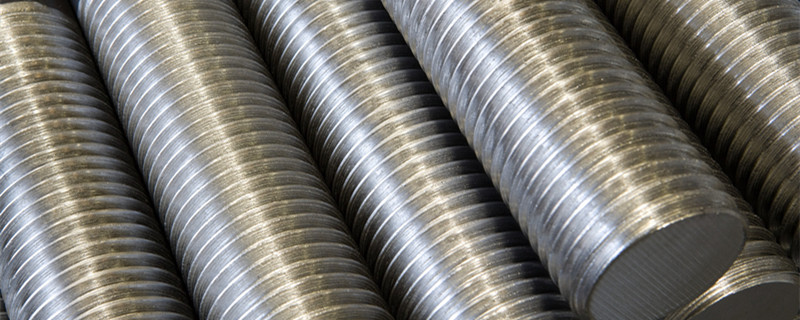301 is one of the grades from the stainless steel family; it can be processed in various forms and variations. In this article, follow us to understand 301 stainless steel composition, material properties (strength & hardness), tempers, equivalent grades in different standards, machining tips, and 301 vs 304.

What Is 301 Stainless Steel?
301 stainless steel (AISI 301/SAE 301) is an austenitic stainless steel well-known for its high strength and good resistance to atmospheric corrosion. Grade 301 comes in different forms, including sheets, strips, wires, plates, and bars. While 301 stainless steel resists rust well in normal environments, it is less suited for highly corrosive chemical settings like acidic or alkaline media. Its main advantage is its capacity to harden when deformed, which improves wear resistance and impact absorption.
Typical Uses of 301 Stainless Steel
You can find stainless steel grade 301 in various industrial applications. Considering its cold-rolled variants, the 1/2 hard stainless steel 301 is usually used in aircraft, railcar, and architectural industries; the 3/4 to full hard SS301 is ideal for applications that need high wear resistance and spring features. Other uses of 301 include automotive molding, wheel covers, roof draining systems, truck bodies, subway cars, etc.
301 Stainless Steel Equivalent Grades
| Region | Standard / Grade | Designation / Code |
|---|---|---|
| USA | AISI / ASTM / UNS | 301 |
| Europe | EN / DIN / WNr | X10CrNi18-8 (1.4310) |
| Germany | DIN / WNr | X12CrNi17-7 |
| Japan | JIS | SUS301 |
| France | AFNOR | Z11CN18-08, Z12CN18-09 |
| England | BS | 301S21, 302S26 |
| Sweden | SS | 2331 |
| International | ISO | X9CrNi18-8 |
301 Stainless Steel Chemical Composition
| Element | 301 (ASTM A666) | 301L (JIS G4305) | 301LN (EN 10088-2 / 1.4318) |
|---|---|---|---|
| Carbon (C) | ≤ 0.15 | ≤ 0.03 | ≤ 0.03 |
| Manganese (Mn) | ≤ 2.0 | ≤ 2.0 | ≤ 2.0 |
| Silicon (Si) | ≤ 1.0 | ≤ 1.0 | ≤ 1.0 |
| Phosphorus (P) | ≤ 0.045 | ≤ 0.045 | ≤ 0.045 |
| Sulfur (S) | ≤ 0.030 | ≤ 0.030 | ≤ 0.015 |
| Chromium (Cr) | 16.0 – 18.0 | 16.0 – 18.0 | 16.5 – 18.5 |
| Molybdenum (Mo) | – | – | – |
| Nickel (Ni) | 6.0 – 8.0 | 6.0 – 8.0 | 6.0 – 8.0 |
| Nitrogen (N) | – | ≤ 0.20 | 0.10 – 0.20 |
301 Stainless Steel Material Properties for Common Tempers
301 Stainless Steel Hardening
301 Stainless steel can’t be hardened by heat treatment; instead, it is hardened through cold working, which involves deforming the material at room temperature. The cold working processes, like rolling and drawing, can increase the strength and hardness of SS301 by transforming its austenitic structure into a harder martensitic structure.
The final hardness of 301 stainless steel varies based on its temper; there are 1/4 hard, 1/2 hard, 3/4 hard, and full hard 301 stainless steel. The cold-worked 301 stainless will gain the highest strength, so the full hard SS301 has a higher tensile strength and yield strength compared to other variants.
SS301 Mechanical Properties (Strength, Hardness & Elongation)
| Grade / Temper | Ultimate Tensile Strength (min.) | Yield Strength 0.2% Proof (min.) | Elongation (50.8 mm) | Brinell Hardness | Rockwell Hardness |
|---|---|---|---|---|---|
| 301 Annealed | 827 MPa | 310 MPa | 60% | 165 | B86 |
| 301 1/4 Hard | 862 MPa | 517 MPa | 25% | 255 | B25 |
| 301 1/2 Hard | 1034 MPa | 758 MPa | 18% | 297 | B32 |
| 301 3/4 Hard | 1207 MPa | 931 MPa | 12% | 342 | B37 |
| 301 Full Hard | 1276 MPa | 965 MPa | 9% | 382 | B41 |
SS301 Physical Properties
| Property | Value |
|---|---|
| Density | 0.285 lbs./in³ (7.88 g/cm³) |
| Electrical Resistivity | 27.4 μΩ•in. (69.5 μΩ•cm) |
| Thermal Conductivity | |
| – At 212 °F (100 °C) | 9.4 BTU/hr./ft./°F (16.2 W/m/K) |
| – At 932 °F (500 °C) | 12.4 BTU/hr./ft./°F (21.4 W/m/K) |
| Modulus of Elasticity | |
| – In tension | 28.0 x 10³ ksi (193 x 10³ MPa) |
| – Shear modulus in torsion | 11.2 x 10³ ksi (178 x 10³ MPa) |
| Poisson’s Ratio | 0.24 |
| Magnetic Permeability (Annealed) | 1.02 max at 200 Oersteds (H/m) |
| Specific Heat 32–212 °F (0–100°C) | 0.12 BTU/lbs./°F (0.50 kJ/kg/K) |
| Melting Range | 2250 – 2590 °F (1399 – 1421 °C) |
Corrosion Resistance of SS301
301 stainless steel has good corrosion resistance similar to that of 304 stainless steel in mild, everyday environments at normal temperatures. However, it is slightly less resistant to corrosion because it contains less chromium and more carbon than 304. This difference becomes more noticeable at higher temperatures, especially during welding or cutting, where 301 is more prone to corrosion due to the formation of chromium carbides. These carbides reduce the protective chromium layer in the heated areas, making 301 less suitable for welded applications compared to 304L, which has lower carbon to prevent this issue.
Is Stainless Steel 301 Magnetic?
301 stainless steel is non-magnetic when it is in its annealed (heat-treated) condition, but it becomes magnetic if it is cold worked, such as by bending, forming, or rolling. This change happens because cold working alters the steel’s structure, increasing its magnetism.
Stainless Steel 301 Machining Tips
Compared to other austenitic alloys, alloy 301 is relatively easy to machine.
- For 301 stainless steel CNC turning, choose a carbide grade with a semi-hard substrate and thin CVD coating at stable conditions.
- For 301 stainless steel CNC milling, use a cutting tool with a semi-hard substrate and a thin PVD coating.
- The recommended cutting speed for 301 turning is 195-260 m/min or 640-850 SFM.
- The recommended cutting speed for 301 milling is 120-165 m/min or 390-540 SFM.
301 vs 304 Stainless Steel – Differences Between 301 and 304
Both 301 and 304 are austenitic stainless steels, meaning they share a similar crystal structure that provides good toughness and corrosion resistance. They both contain chromium and nickel as their main alloying elements, which help form a thin, protective oxide layer that prevents rusting. What a re the differences between them?
1. Chemical Composition
301 stainless steel contains slightly less chromium (16–18%) and nickel (6–8%) but has a higher carbon content (up to 0.15%) compared to 304 stainless steel, which has 18–20% chromium, 8–12% nickel, and a lower carbon content (up to 0.08%). These small differences in alloying elements affect their strength, corrosion resistance, and cost.
2. Corrosion Resistance
Both 301 and 304 stainless steels resist corrosion well in mild environments, but 304 is generally more resistant due to its higher chromium and nickel content. This makes 304 better suited for harsher or high-temperature conditions, while 301 may be more prone to corrosion, especially in welded or heat-affected zones.
3. Strength and Formability
301 stainless steel has higher strength and hardness, particularly when cold worked, making it suitable for applications requiring durability and tensile strength, like springs and automotive parts. In contrast, 304 stainless steel is softer and more ductile, making it easier to form, bend, and weld without cracking.
4. Cost
301 stainless steel is usually less expensive than 304 because it contains less nickel and chromium, which are costly alloying elements. This makes 301 a cost-effective option when corrosion resistance is less critical.
5. Durability
304 stainless steel is generally more durable in corrosive environments due to its higher chromium and nickel content, which helps maintain its protective oxide layer better over time. 301 offers good durability but may require more maintenance in aggressive conditions.
6. Applications
301 stainless steel is commonly used where high strength is needed, such as in springs, automotive trim, conveyor belts, and aircraft components. 304 stainless steel is preferred for applications requiring excellent corrosion resistance and ease of fabrication, including food processing equipment, kitchen appliances, chemical containers, and architectural panels.







